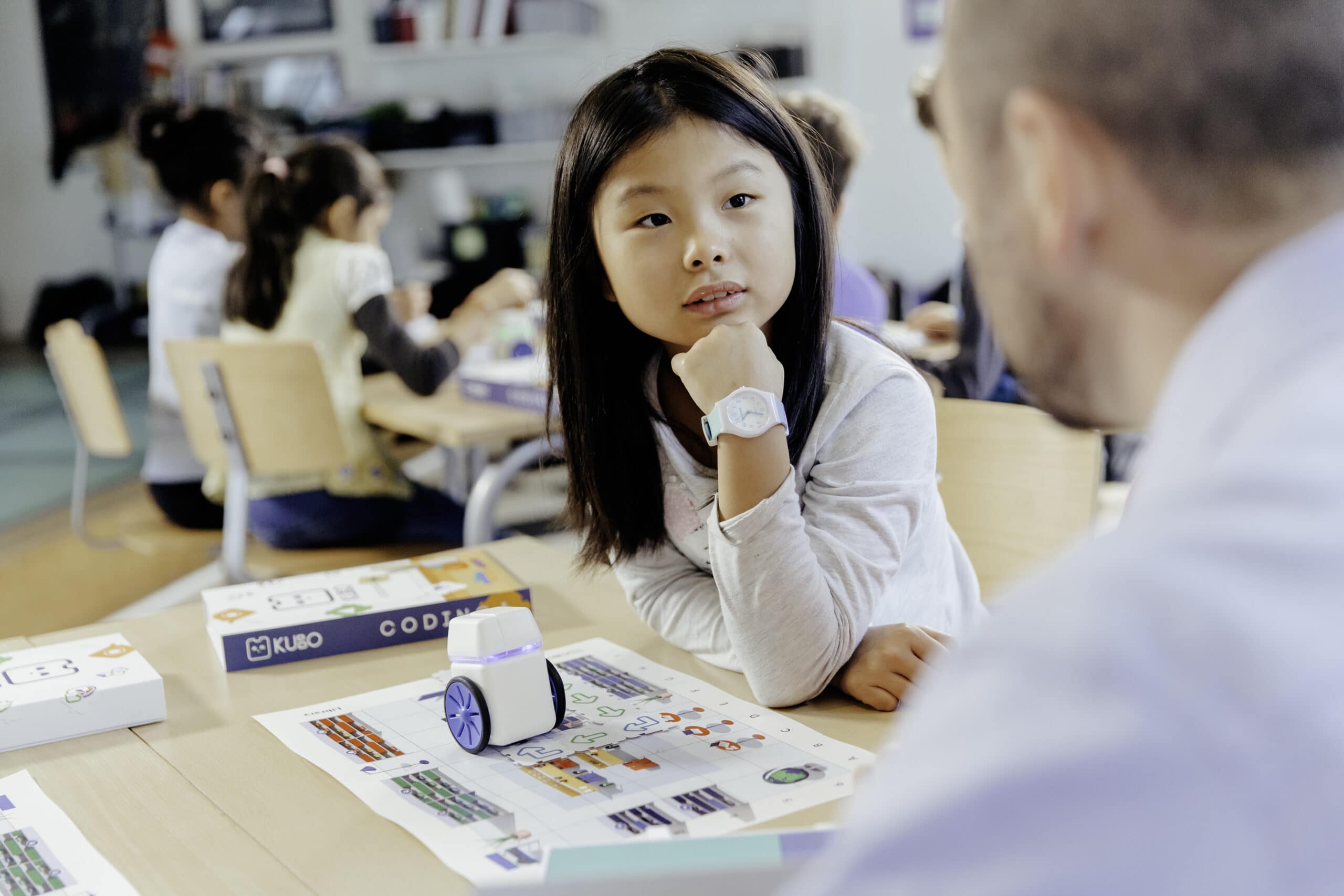There’s a lot of buzz around STEM in the field of education right now. So let’s dig in and figure out what the fuss is all about.
What does STEM stand for?
STEM education stands for Science, Technology, Engineering, and Mathematics. STEM education puts focus on preparing future generations with the knowledge and skills they will need to be successful in their careers.
In particular, science helps students gain a better understanding of how things in the universe work. Technology equips students with a comprehensive understanding of how computers, robots and tech are used. Engineering provides children with the knowledge and skills to design and build machines. Mathematics enables students to tackle scientific, mechanical and coding problems.
With focus on practical learning, the STEM components foster a skill set that’ll determine the way next generations will think and behave. Combined the STEM elements teach students how to think critically, solve problems and persevere. What’s more, they enhance creativity and improve communication and collaboration skills.
STEM curriculum challenges the current education system
STEM education is one of the largest reforms in K-12 education we have seen in the past decade. STEM challenges the way we teach kids to learn. Instead of presenting lessons and facts and expecting children to memorize all that information, STEM puts focus on learning by doing.
By providing a practical, project-based approach to learning, STEM encourages exploration and creativity. It teaches kids to identify obstacles and leverage the knowledge they have to overcome them. Students are free to express their thoughts and ideas, and experiment in a safe environment, where they can embrace their mistakes and learn to persevere.
STEM equips learners with a curious and flexible mindset, and enables them to adapt to changes, respond to real-world challenges and to generate new technologies and ideas.
The importance of STEM education to global economy
The global economy is constantly changing. And so is the job market with current jobs being replaced by automation processes and new jobs emerging as a result of technological innovations. To meet the needs of the market, kids need to develop STEM qualifications and skills as early as their K-12 education.
What are STEM jobs?
A STEM job is a job within the fields of science, technology, engineering or mathematics. Any job in these fields, from a biochemist to a computer programmer or an engineer, requires knowledge about how to conduct research and develop new products or services. So how do we teach young learners skills like research or development of new technology when even most of us, adults, can’t explain what these skills are and how does one acquire them?
This is where the STEM education makes a real difference. STEM moves beyond the traditional teaching and learning methods and focuses on developing skills that connect classroom learning to the real world.
STEM education helps kids become problem solvers by encouraging logical & computational thinking. Teaching kids to analyze situations from different perspectives and encouraging them to use clear communication and reasoning behind their ideas, develops and nurtures an innovative mindset. In addition, the project-based approach to learning gives students the confidence to tackle problems and show initiative when a challenge arises.
STEM skills help kids to be successful in the world of tomorrow regardless of their specific career goals.
As productive and innovative mindsets grow, so does the economy. The more innovation skills the future workforce has, the more likely it is that we see a rise in job growth and employment wages. When people have more money they purchase more, making businesses more profitable. Meaning businesses have the resources to hire more people and so the cycle of economic growth continues.
Why is it important to teach STEM in the early years?
Children are innately curious. It’s in their nature to explore and discover the world around them. The more we encourage their need for exploration and discovery, the more they are likely to stay curious throughout their lives. Helping kids to make connections, discover meanings and draw conclusions, enables them to think outside the box and to approach challenges with a positive attitude.
STEM helps kids to not learn in a vacuum. Just like in sports, we learn about football by playing football. STEM learning shouldn’t be any different. Kids should be able to learn about science by performing science experiments, or learn about engineering by programming a robot.
STEM in Kindergarten
Kindergarten children, as young as 4 years old, can easily grasp STEM concepts. They can in fact understand concepts much quicker via STEM activities than by listening to a lesson. Why? Because STEM is all about hands-on learning via practical experiments.
For example, kindergarten kids can easily learn the basics of coding with educational robots. The fundamentals of coding are based on simple and logical steps. By offering kids the options to try coding with their own hands, they can quickly learn new knowledge and skills in a fun and engaging way. When introduced this early in the kids’ learning process, STEM education becomes a natural way of learning.
STEM in Primary School
STEM education at primary school level, should introduce students to what is STEM and how it shapes the world around them. Sparking the kids’ interest in the fields of science, technology, engineering and math, helps them find out their own interests and reinforces the learning process.
For example, math is often perceived as a theoretical subject and many kids struggle to understand how math is implemented in the real world. But is there really a better way to learn about volume by building a container for 50 bars of chocolate? Or understanding probability and predictability by playing with dice? By giving kids a familiar context, they increase their engagement with school subjects and start making connections between their learnings and everyday life.
STEM in Secondary School
STEM education at a secondary school level is more challenging and studies the subjects in depth. Students are able to use the knowledge they have and build actual robots, or design and execute science experiments.
Bringing real-life learning experiences is quite crucial at this part of the students’ education. For example, a science project can discuss COVID-19, what herd immunity is and how can it combat viral epidemics? Challenging students to get a better understanding of and solve world problems is one of the best ways to help students explore their interests and help them decide what type of career could be a good fit for them.
Final thoughts on STEM Education
The world we live in is changing at a fast pace and our education system needs to adapt it. We need to make sure that the future generations are equipped with the right skillset to be part of the workforce needed for sustainable and economic growth. Raising kids through STEM education, helps them become the change makers of tomorrow.






